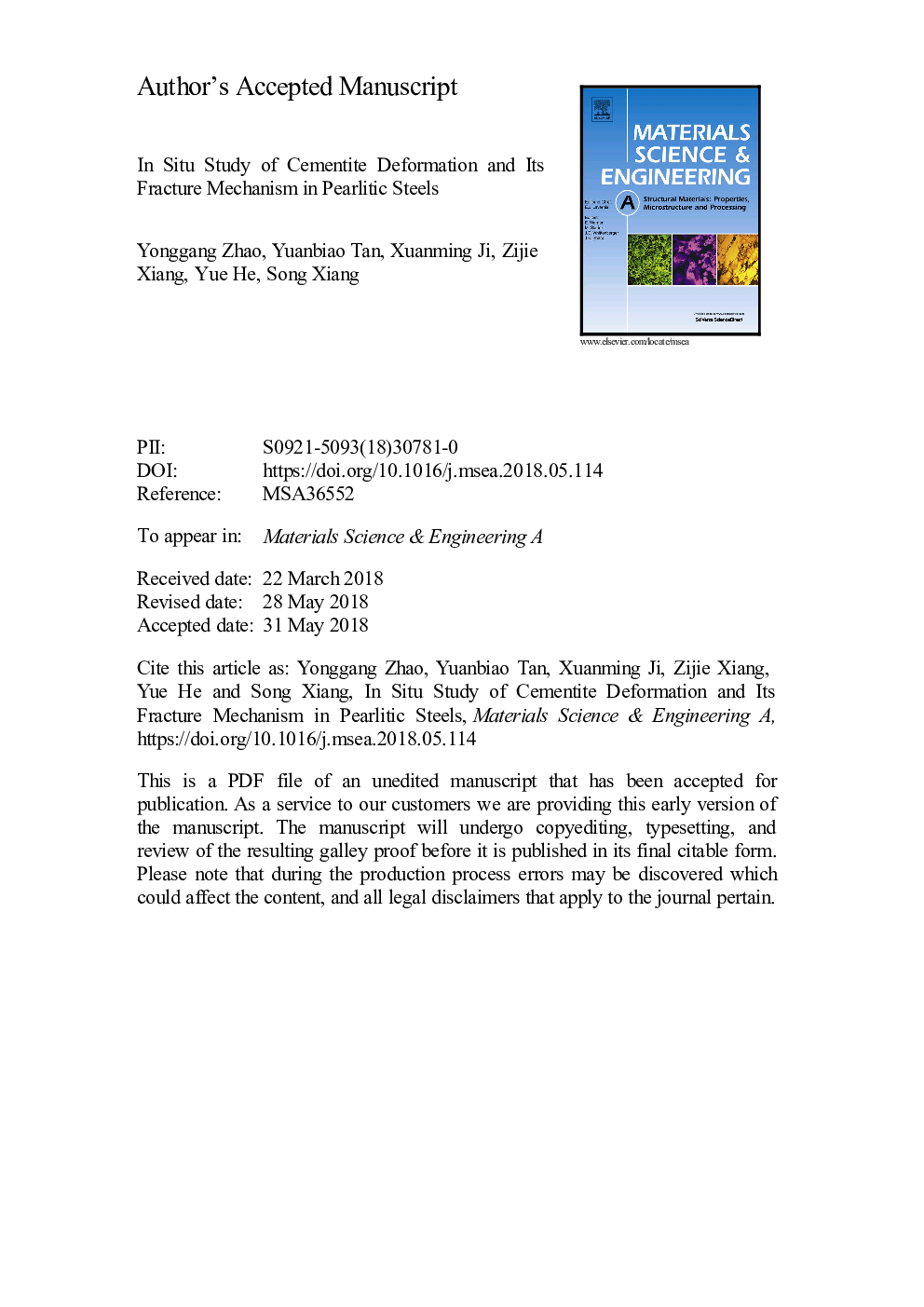| Article ID | Journal | Published Year | Pages | File Type |
|---|---|---|---|---|
| 7971679 | Materials Science and Engineering: A | 2018 | 25 Pages |
Abstract
The deformation and fracture behaviors of cementite in pearlitic steels during tensile tests were investigated by in situ scanning electron microscopy (SEM), high-resolution transmission electron microscopy (HRTEM) and electron backscatter diffraction (EBSD). The results showed that the deformed structure had three different types of shear bands: shear deformation in the pearlite colonies, at the interfaces of the pearlite colonies and at the phase boundary between ferrite and cementite. The orientations of the shear bands were nearly anisotropic with respect to the tensile axis. The path of shear deformation developed at the dislocation walls and was propagated by the offset of the cementite along the dislocation walls. As the dislocations cut perpendicularly through the cementite layers, the single-crystalline cementite platelets were divided into many nanometer-sized subgrains by the effects of the shearing stress. This process hindered dislocation movement and led to the accumulation of complex dislocations at the adjacent ferrite lamellae. Thus, the plastic deformation of the cementite layers was characterized by bulging until they fractured. The pearlitic texture component was evenly distributed, and the crystallographic axes of the colonies were randomly oriented. Hence, three different shear models characterized the crack propagation process, which occurred in a linear fashion and could be considered the pearlite colonies as a displacement unit for forward expansion.
Keywords
Related Topics
Physical Sciences and Engineering
Materials Science
Materials Science (General)
Authors
Yonggang Zhao, Yuanbiao Tan, Xuanming Ji, Zijie Xiang, Yue He, Song Xiang,
